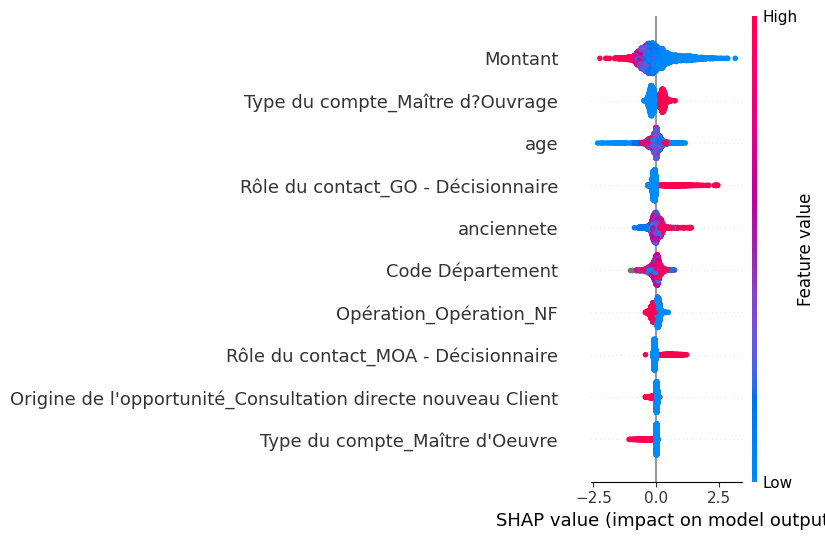Project Overview
Before returning from Germany, I took on a two-month freelance mission as a Business Intelligence Analyst at Etandex, one of France’s largest construction and infrastructure companies. The goal was to predict the likelihood of converting a commercial opportunity into a signed contract and provide actionable insights into the model’s decisions. It was a nice opportunity to try something different from my usual work.
Data and Methodology
The analysis relied on historical opportunity data from Salesforce, enriched with staff information and INSEE demographic data. Key steps included:
- Data cleaning: Removing duplicates, handling missing or negative values, converting formats, and encoding categorical variables.
- Data enrichment: Linking opportunities with employee data (age, seniority, role) and geographic data (commune, department).
- Labeling outcomes: Opportunities marked as “won” or “archived won” were positive; “lost” or “archived lost” were negative. Older unresolved opportunities were considered lost.
Visualizations using PCA and t-SNE confirmed the complexity of the classification task, showing no clear separation between success and failure classes.
Modeling
The dataset was split 80/20 for training and testing. Several models were evaluated for tabular prediction:
- Logistic Regression
- Random Forest
- XGBoost
- LightGBM
Recent opportunities were weighted more heavily to reflect their relevance. XGBoost achieved the highest test accuracy at 69%, slightly outperforming LightGBM and Random Forest.
Explainable AI
To interpret the predictions, I applied:
- Feature Importance: Highlighted key factors like opportunity amount and employee characteristics, though correlation does not imply causation.
- SHAP values: Quantified the contribution of each feature to predictions globally and locally. For example, “decision-maker role” consistently had a positive impact, while employee seniority varied depending on context.
- Anchor rules: Provided simple conditional rules explaining why a prediction was made, enhancing interpretability for non-technical stakeholders.

Takeaways
The project demonstrated how machine learning and explainable AI can help with commercial decision-making by:
- Optimizing resource allocation toward high-potential opportunities
- Providing interpretable insights to guide sales strategy